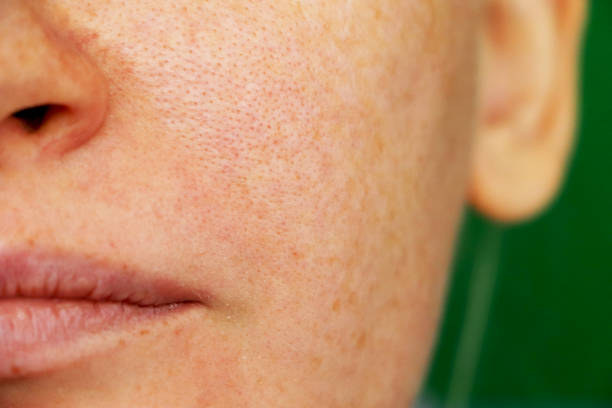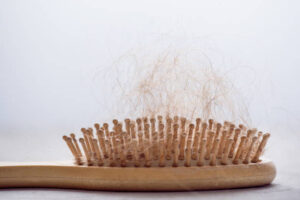Open pores on the face, get rid of open pores
Open pores are
a common skin concern that occurs when the skin’s natural oil and sweat glands
produce excess sebum, causing the pores to become enlarged and visible. Open
pores are most commonly found on the nose, chin, and cheeks and can be
exacerbated by factors such as genetics, age, and environmental factors like
pollution and sun damage.

To help reduce
the appearance of open pores, it is important to maintain a consistent skincare
routine that includes cleansing, exfoliating, and moisturizing. Using a gentle
cleanser and exfoliant can help remove excess oil and dead skin cells that can
clog pores, while a lightweight moisturizer can help keep the skin hydrated
without contributing to oiliness.
In addition to
skincare, certain lifestyle habits can also help minimize the appearance of
open pores. These include avoiding heavy makeup, using sunscreen daily, staying
hydrated, and maintaining a healthy diet and exercise routine.
It’s important
to note that while it’s impossible to completely eliminate open pores, consistent skincare, and lifestyle habits can help minimize their appearance and improve your skin’s overall health and appearance. If you have concerns
about your skin or are experiencing persistent acne, it’s always a good idea to
consult with a dermatologist or skincare professional.
How to get rid
of open pores naturally
While it’s impossible to completely get rid of open pores, you can take several steps to minimize their appearance and improve the overall health of your skin.
- Cleanse
your face twice a day with a gentle cleanser: Use a mild, non-comedogenic
cleanser to remove dirt, oil, and impurities from your skin. Avoid using
harsh scrubs or exfoliants, as these can further irritate your skin. - Exfoliate
regularly: Exfoliating once or twice a week can help remove dead skin
cells and unclog pores. Choose a gentle exfoliant that is appropriate for
your skin type and be careful not to overdo it, as excessive exfoliation
can cause irritation and inflammation. - Use a
toner: Toners can help remove any remaining dirt, oil, or impurities from
your skin, while also helping to balance your skin’s pH levels. - Use a
retinoid: Retinoids can help unclog pores and stimulate collagen production,
improving your skin’s appearance. Start with a low
concentration and gradually increase over time, as these products can be
irritating to sensitive skin. - Moisturize:
Use a lightweight, non-comedogenic moisturizer to keep your skin hydrated
without clogging pores. - Wear
sunscreen: Sun damage can contribute to the appearance of open pores, so
it’s important to protect your skin from harmful UV rays. Use broad-spectrum sunscreen with an SPF of 30 or higher and reapply every two
hours. - Consider
professional treatments: If you’re still unhappy with the appearance of
your pores, consider consulting with a dermatologist or esthetician.
Treatments like chemical peels, microdermabrasion, and laser resurfacing
can help minimize the appearance of open pores and improve the overall
texture and tone of your skin.
Home remedies
to get rid of Open pores
Several home remedies can help reduce the appearance of open pores:
- Apple
cider vinegar: Mix equal parts of water and apple cider vinegar, apply to
your face with a cotton ball, and let it sit for 10-15 minutes before
rinsing off. The acetic acid in apple cider vinegar can help tighten and
unclog pores. - Baking
soda: Mix a small amount of baking soda with water to create a paste,
apply to your face, and gently massage for 30 seconds before rinsing off.
Baking soda has exfoliating properties that can help remove dead skin
cells and unclog pores. - Egg
whites: Beat one egg white and apply to your face, let it dry for 10-15
minutes, and then rinse off. Egg whites contain proteins that can help
tighten and tone the skin, which can reduce the appearance of open pores. - Aloe vera:
Apply fresh aloe vera gel to your face and let it sit for 10-15 minutes
before rinsing off. Aloe vera has anti-inflammatory properties that can
help soothe irritated skin and reduce the appearance of open pores. - Lemon
juice: Mix equal parts of lemon juice and water, apply to your face with a
cotton ball, and let it sit for 10-15 minutes before rinsing off. The
citric acid in lemon juice can help exfoliate and tighten pores.
It’s important
to note that while these home remedies may help reduce the appearance of open
pores, they may not work for everyone and could potentially irritate your skin.
It’s always a good idea to patch-test any new products or ingredients before
applying them to your face and to consult with a dermatologist if you have any
concerns about your skin.
Medication for
open pores
Several medications can be prescribed by a dermatologist to help reduce
the appearance of open pores:
- Retinoids:
Retinoids are topical medications that contain vitamin A derivatives, and
they can help unclog pores and stimulate collagen production. Examples
include tretinoin, adapalene, and tazarotene. - Salicylic
acid: Salicylic acid is a beta-hydroxy acid that can help exfoliate dead
skin cells and unclog pores. It is available in over-the-counter topical
treatments or in prescription-strength formulations. - Alpha-hydroxy
acids: Alpha-hydroxy acids (AHAs) are a group of natural acids that can
help exfoliate and brighten the skin. Examples include glycolic acid,
lactic acid, and mandelic acid. - Azelaic
acid: Azelaic acid is a topical medication that can help unclog pores and
reduce inflammation. It is often prescribed for acne but can also be used
to treat open pores. - Isotretinoin:
Isotretinoin is an oral medication that is used to treat severe acne. It
works by reducing the production of sebum, which can help minimize the
appearance of open pores.
It’s important
to note that these medications can have side effects, and they should only be
used under the guidance of a dermatologist. Additionally, it may take several
weeks or months of consistent use before seeing significant improvement in the
appearance of open pores.




